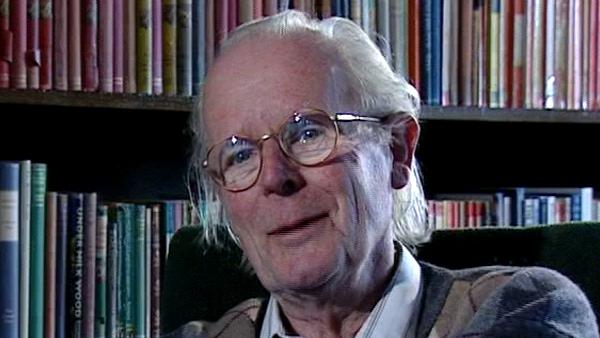NEXT STORY

Difficulty publishing papers in the 1950s
RELATED STORIES

NEXT STORY

Difficulty publishing papers in the 1950s
RELATED STORIES


|
Views | Duration | |
|---|---|---|---|
| 11. The notion of analogue in science | 1 | 1176 | 02:22 |
| 12. Trying to design an unstable aeroplane | 1045 | 01:32 | |
| 13. Unstable flying animals | 1 | 1061 | 02:36 |
| 14. Difficulty publishing papers in the 1950s | 1165 | 01:37 | |
| 15. Politics at Cambridge | 1202 | 02:04 | |
| 16. The Communist Party at Cambridge | 1257 | 01:29 | |
| 17. Dealing with stories of Stalin's excesses | 1246 | 03:58 | |
| 18. Marxist philosophy. Experimenting with temperature acclimatisation... | 1 | 1137 | 02:47 |
| 19. Holistic versus mechanistic | 1 | 1274 | 03:35 |
| 20. Becoming a biologist | 2 | 1171 | 03:10 |


As an engineer, I learnt that you could, in principle, have a flying machine which was unstable and was stabilised by having - if you like - sense organs or sensors which told it what was happening, and a very quick built-in response to those sensors. And I didn't think any more about it until years later, when I was an undergraduate at University College, studying zoology, I realised that flying animals are probably unstable. I knew that... it was clear that birds are, it's rather obvious. In the moulting season, you'll occasionally see a sparrow with no tail, and it flies fine. No aeroplane would fly without a tail. Then, there were much more elegant experiments by a guy called Pringle, who later become Professor at Zoology at Oxford, who showed that two winged flies, Diptera, are unstable, but... in a static sense. And yet they have these little sense organs, the halteres, which are their modified hind wings, which give them information about how they're moving, and they have reflexes to this which enables them to fly. And it's kind of amusing, if you cut the halteres off, the fly can't fly, it just fizzes to the ground. But then, you can make it stable again by giving it a fin. The easiest sort of fin to give it is the tip of a cock's hackle feather, I had them because I used to tie trout flies. And you stick one of these little feathers on the back of the fly and it can fly again. It doesn't fly very well, it zzzzzz, like this, but it can fly. And so I realised that what was true of aeroplanes was true of animals. But interestingly, the most primitive flying animals were... were stable, they didn't have this sensory device, they had great long tails.
[Q] Pterosaurs?
The first Pterosaurs have long tails, Rhamphorhynchus has a great big long tail.
[Q] A great ping-pong bat on the end.
Yes, that's right. What's it called... Archaeopteryx has a great long tail. I don't have any primitive bat with a long tail, but we don't have any.
[Q] There were some late Pterosaurs that didn't have any tail at all, they must have been computationally controlled.
They were computationally controlled, yes. The later ones are fine, but the first insects, the first birds and the first Pterosaurs all had long tails, the one group we don't know about are the bats. They're clearly unstable now, but were they primitively stable? I'd love somebody to find a bat with a long tail.
The late British biologist John Maynard Smith (1920-2004) is famous for applying game theory to the study of natural selection. At Eton College, inspired by the work of old Etonian JBS Haldane, Maynard Smith developed an interest in Darwinian evolutionary theory and mathematics. Then he entered University College London (UCL) to study fruit fly genetics under Haldane. In 1973 Maynard Smith formalised a central concept in game theory called the evolutionarily stable strategy (ESS). His ideas, presented in books such as 'Evolution and the Theory of Games', were enormously influential and led to a more rigorous scientific analysis and understanding of interactions between living things.
Title: Unstable flying animals
Listeners: Richard Dawkins
Richard Dawkins was educated at Oxford University and has taught zoology at the universities of California and Oxford. He is a fellow of New College, Oxford and the Charles Simonyi Professor of the Public Understanding of Science at Oxford University. Dawkins is one of the leading thinkers in modern evolutionary biology. He is also one of the best read and most popular writers on the subject: his books about evolution and science include "The Selfish Gene", "The Extended Phenotype", "The Blind Watchmaker", "River Out of Eden", "Climbing Mount Improbable", and most recently, "Unweaving the Rainbow".
Tags: UCL, Nigel Pringle
Duration: 2 minutes, 36 seconds
Date story recorded: April 1997
Date story went live: 24 January 2008